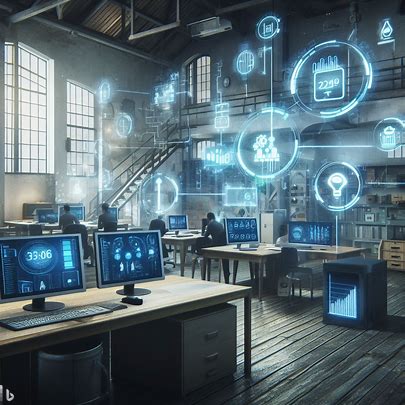
For companies that have been in business for decades, operating out of older buildings is commonplace. However, many of these legacy facilities now face rising energy costs and net-zero sustainability pressures using antiquated infrastructure. Much of the HVAC, lighting, manufacturing equipment, and controls in legacy buildings are outdated and energy inefficient.
Yet ripping out and replacing these assets requires major capital expenses and business disruptions that simply are not feasible. As a result, legacy businesses often struggle with energy invisibility and lack of optimization capabilities. Their buildings rely on manual
oversight and old single point “master meters” or breaker panels that provide only basic electricity usage data. Without granular real time visibility into the various behind-the-meter energy loads, it’s impossible to know how much power each of these loads are consuming,
which makes it extremely difficult to identify energy waste and improve efficiency.
Legacy businesses need solutions to cut energy costs and meet efficiency goals, without costly equipment replacements. This is where the rise of Internet of Things (IoT) sensors and cloud-based analytics platforms presents new opportunities. By implementing an IoT energy management solution, legacy facilities can gain connectivity, visibility and intelligent controls to optimize older infrastructure with technologies that are low in upfront cost, provide IoT security and are easy to implement.
Networks of wireless IoT sensors can be rapidly deployed to monitor at a granular level behind-the-meter energy use from lighting, HVAC, plug loads and more. When paired with cloud analytics, IoT provides the missing visibility to pinpoint energy waste across systems in a
legacy building. The powerful data insights unlocked by IoT platforms enable both automated and human-driven energy optimization across outdated equipment, resulting in reduced energy use and GHG emissions. Moreover, these IoT devices can collect valuable data
regarding relative operational efficiency of specific energy consuming equipment and devices. This enables building operators to engage in preventive maintenance and avoid costly repairs or replacement that may result from running equipment failure.
In short, IoT energy management can drive new efficiency capabilities in legacy buildings, without the disruption and cost of major upgrades. Implementing an IoT platform for older assets can unlock major savings and sustainability gains by providing the visibility and
control needed to connect dated energy infrastructure to modern intelligence at a low cost and with a short-term ROI.
What is IoT?
IoT stands for Internet of Things. It refers to networks of physical objects embedded with sensors, software, and connectivity that enable them to collect and exchange data over the internet. IoT objects can include devices like smart thermostats, air quality monitors, fleet
tracking systems, and more.
When deployed at scale, these interconnected IoT devices generate massive streams of real-time data on energy use, environmental conditions, equipment operations, and human behaviors. Cloud platforms apply advanced analytics like machine learning to extract insights from this data to inform intelligent automation and better decision making.
IoT deployments are expanding rapidly across industrial, commercial, and residential sectors. Examples include sensors monitoring factory floor outputs, GPS tracking of supply chain assets, and home security cameras controlled via smartphones. Global investments in IoT are projected to reach over $1 trillion annually by 2025 as organizations digitize operations.
The Challenges of Legacy Facilities
Legacy facilities often suffer from energy invisibility – lack of insights into how much power different systems are using in real-time. Older buildings rely on dated meters, breaker panels, and controls that provide limited whole-building electricity data at best. Without visibility into granular energy use, it is impossible to identify waste or optimize systems.
Much of the equipment in these buildings is outdated as well. Old HVAC, lighting, and manufacturing equipment and control systems consume far more energy than modern counterparts. Upgrading physical infrastructure requires significant capital expenses and downtime that many businesses cannot afford.
The IoT Opportunity
IoT presents a faster, cheaper way to cut energy waste in legacy facilities. When implemented, connected sensors can monitor granular data like zone-level temperatures, light levels, plug loads, and HVAC operating status. Environment sensors can check CO2, humidity, and
occupancy.
Analytics extract insights from the IoT data to model energy usage patterns, detect anomalies, and identify savings opportunities. Automation algorithms then optimize equipment scheduling and control settings to improve efficiency across the building.
With an enterprise IoT platform, facility managers gain unprecedented visibility into energy use. They can view live energy dashboards with breakdowns of consumption by load type. Advanced reporting determines the ROI of efficiency measures. These capabilities enable
intelligent, data-driven decisions for optimizing energy in legacy infrastructure.
